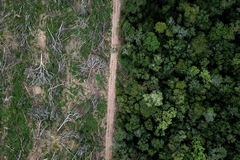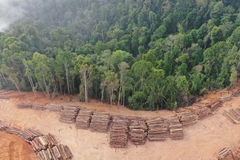Flavor from fungus? Researchers develop wild strawberry aroma grown from fruit waste
19 Nov 2021 --- Researchers have developed a naturally derived wild strawberry aroma using edible fungus from waste coming from blackcurrant juice production.
Reporting in ACS’ Journal of Agricultural and Food Chemistry, the researchers believe that the wild strawberry is even more “highly prized” than its store-bought cousin because of its intense aroma and unique sweet taste. However, they’re hard to find in the wild, so some companies make synthetic versions of this flavor.
Naturally sweet
Wild strawberries are often smaller than cultivated varieties, but they contain a lot of flavor.
Between their rarity and size, it’s expensive to get a natural wild strawberry flavor – the combination of their distinct aroma and taste – into foods.
Interestingly, some species of fungi are adept at converting plant material into pleasant odor compounds, including vanillin, raspberry ketone and benzaldehyde, an almond-like odor. One particular edible brown-rot fungus, Wolfiporia cocos, can release fruity and floral aromas in the process of breaking down foods like tea and carrot peels. Wild strawberries are often found in forests.
Wild strawberries are often found in forests.

Utilizing waste
An abundant and nutrient-rich substrate for the fungus could come from the blackcurrant juice industry, which produces a lot of pulp, seed and skins – waste known as pomace – that is usually thrown away.
So, Holger Zorn and colleagues wanted to grow W. cocos on pomace from black currants and tweak the conditions to naturally produce the unique aroma associated with wild strawberries.
The researchers initially grew W. cocos with black currant pomace as the fungus’ sole source of nutrition, which resulted in fruity and floral aromas. When the team added ammonium nitrate, sodium L-aspartate monohydrate, monopotassium phosphate and a few other substances to the medium, the culture released an aroma similar to wild strawberries.
The researchers used gas chromatography-mass spectrometry-olfactometry (GC-MS-O) and ten trained panelists to pinpoint the exact compounds that contributed to the scent.
The most intense odors that the sensory panel perceived were (R)-linalool, methyl anthranilate, geraniol and 2-aminobenzaldehyde.
The researchers then combined artificial versions of these four compounds into a model wild strawberry smell. They found that the sensory experts rated it very similar to the wild strawberry-like odor from the cultivated fungus.
By growing W. cocos on food waste, the researchers say they’ve developed a “sustainable and cost-effective way to produce an aroma that could be used industrially in a natural flavoring agent.”
Edited by Elizabeth Green













